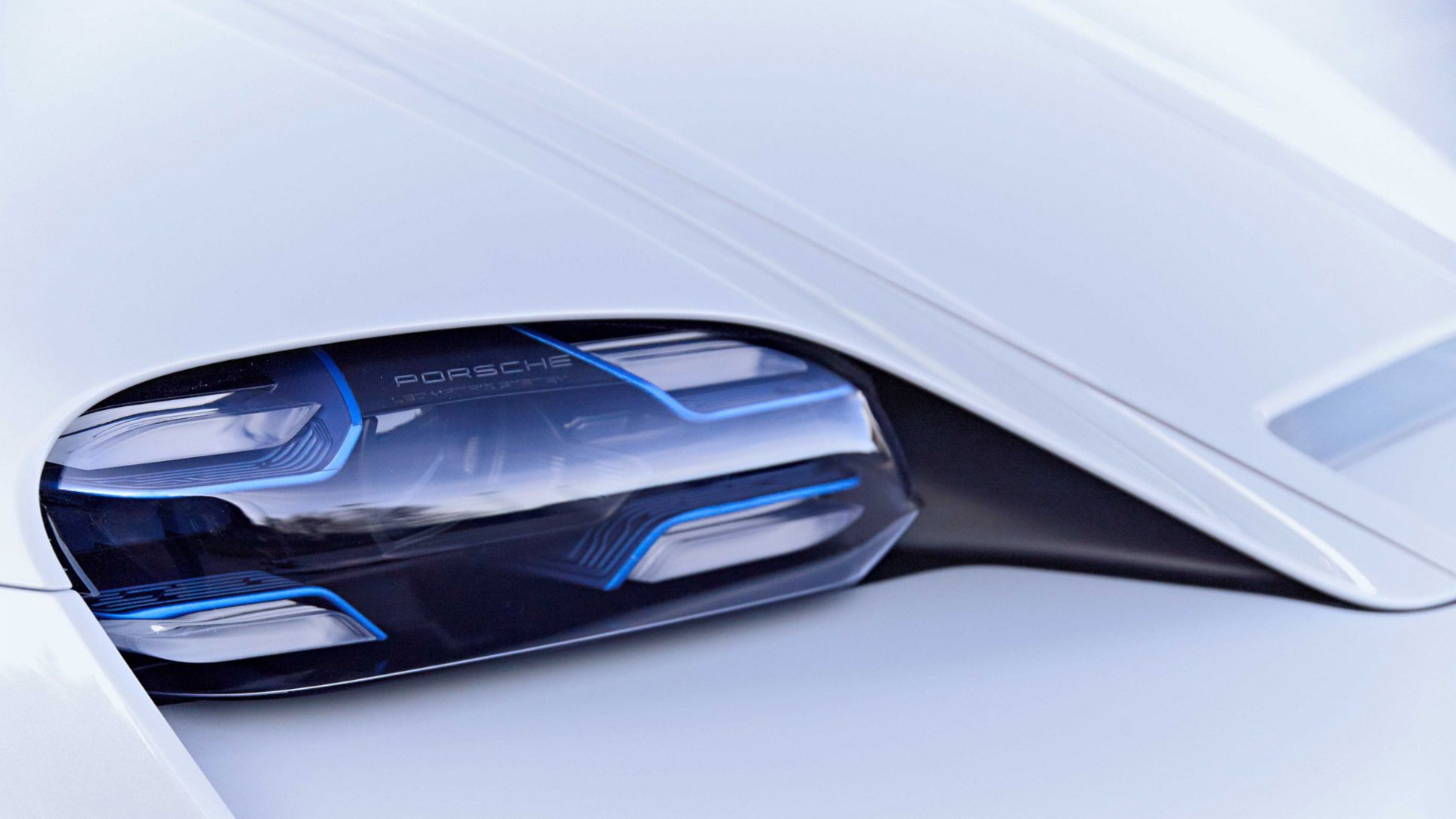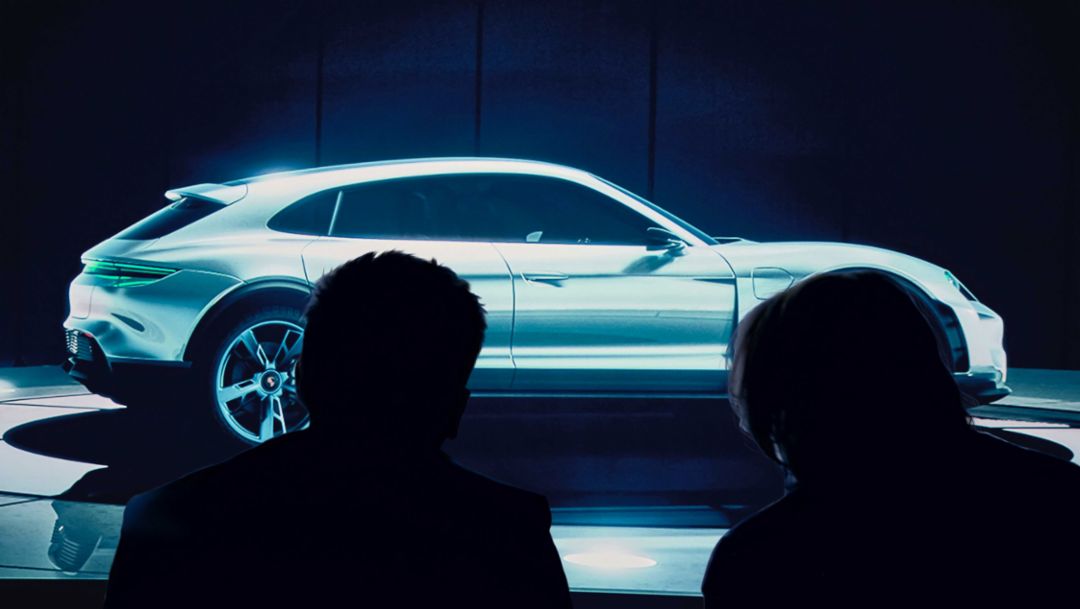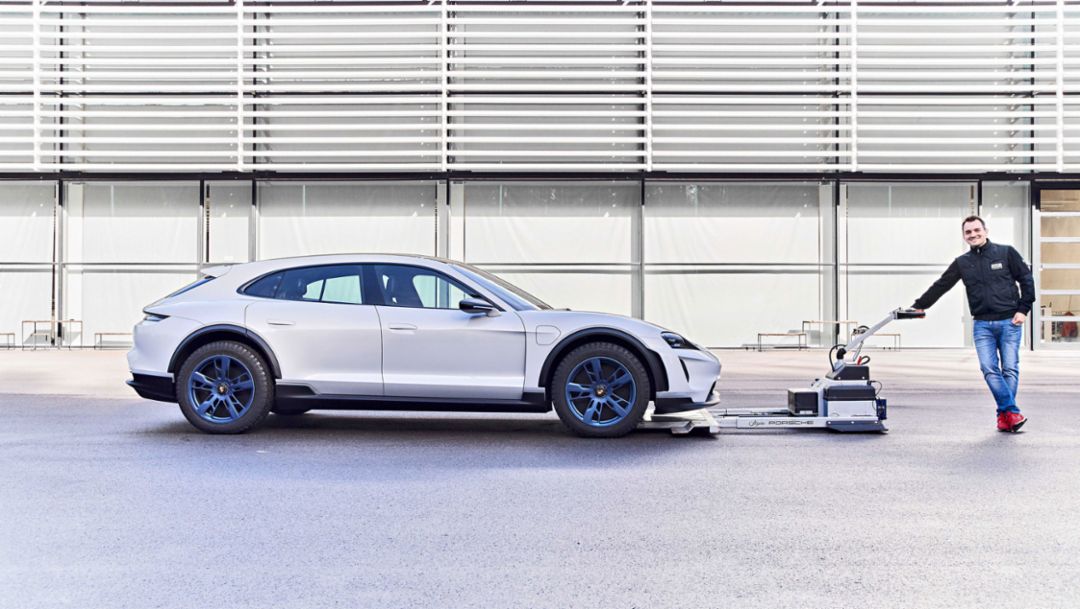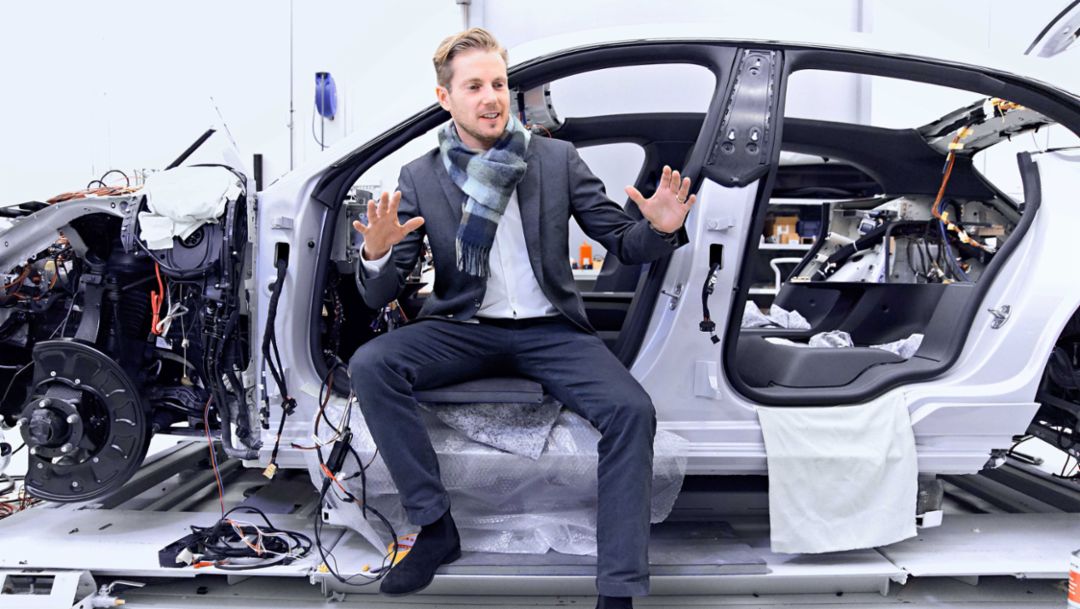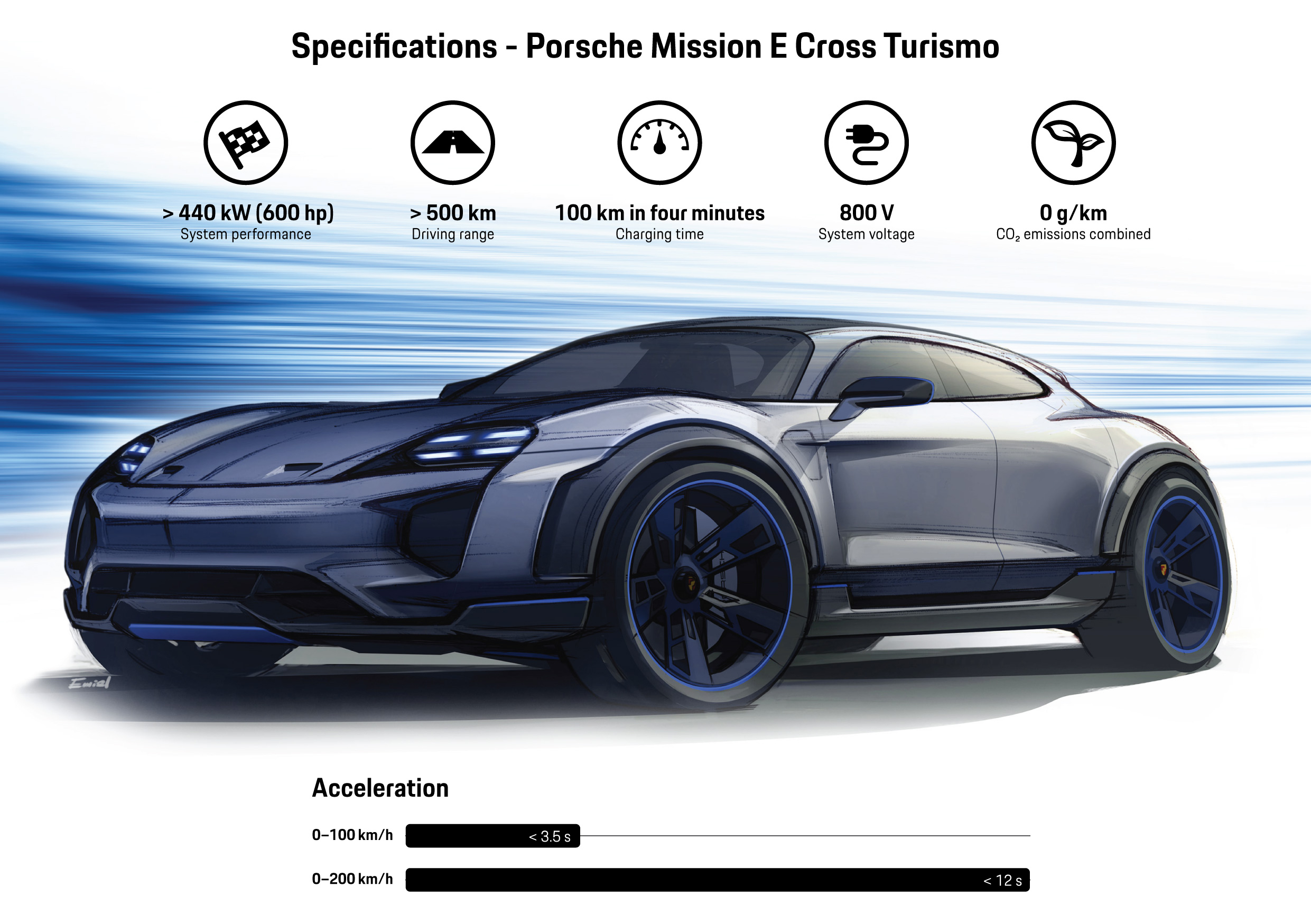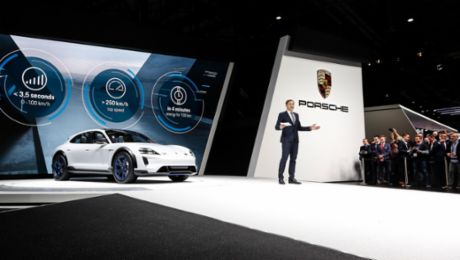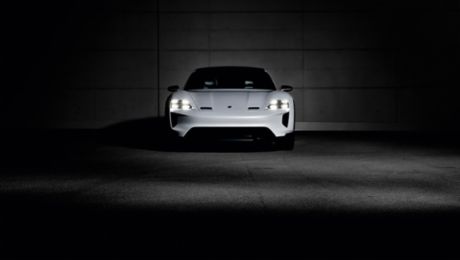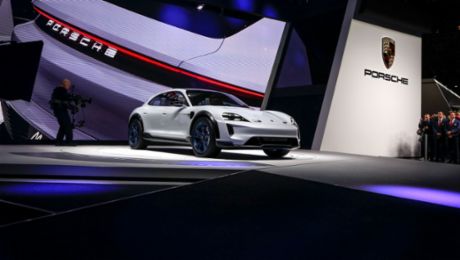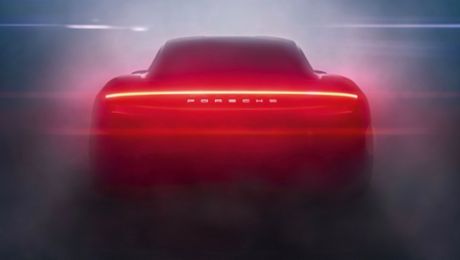When the charismatic Mission E was presented at the IAA in Frankfurt in 2015, Porsche purists across the country cried out just as they did when the water-cooled engines replaced the air-cooled model. Mission E is nevertheless setting new standards, redrawing the automobile country map, and–gradually–being accepted as the 911 of electric cars. Not least because we have enthusiastically identified its design as a true Porsche.
At Zuffenhausen, there is a long tradition of thinking ahead, beyond and creatively. When the Cayenne arrived many years ago, some were predicting the decline of the Western World. Then the Porsche SUV became a success–and not only among Porsche drivers. The Panamera was even a luxury saloon! It was very sporty, at least, but “My God!” the cry went up. “What will become of Zuffenhausen?”
“In 2015, Porsche presented a model–a concept car–intended to answer the question: What could an electric Porsche car look like in the future?” says Peter Varga, Head of Exterior Design Style at Porsche. “It was a huge challenge, but in retrospect, a huge success for us. The car was very positively received, even though we changed a lot. On the one hand, you do not expect us to forget our tradition and history. On the other hand, Porsche is famous for always being ready for a new story, for new chapters. Just have a stroll through our museum”.
Now Porsche is taking electric vehicles off-road. Not with a hybrid with mass market appeal, but rather–entirely electrically–with a vehicle based on the Mission E concept that was once decried as heretical. And, like the Mission E, the new study is also an impressive vehicle: a high-seated Shooting Brake variant, designed quite deliberately to unite sportiness and luxury with environmental protection, even on off-road terrain.
Such studies are often seen as playgrounds for designers; prototypes that at best represent a general reorientation of a manufacturer’s model policy. This is not the case at Porsche. Everything devised by the Zuffenhausen think tanks has a very definite future. The maxim is that everything that is shown, happens. The sports car manufacturer’s designers are therefore subject to the particularly concrete concept of reality: What is promised on paper, must be delivered by the exhibition vehicle. Where other manufacturers are busy polishing empty shells with wheels and a neat data sheet and concealing imperfect clearances with pretty trade fair girls, Porsche is building a fully functional car. Top speed: 250 km/h. You can either see this as an exaggeration, or as a symbol of the demanding mentality in Weissach and Zuffenhausen. Always wanting a little more, always going a bit further, and always questioning everything. And above all, questioning themselves. This is probably what made it possible for someone to come up with the idea of presenting an almost production-ready car in Geneva–a car that not drives using electricity alone and is capable of charging at the designated charging stations in record time, but one that also demonstrates real off-road characteristics. While the general public is discussing the expansion of nationwide charging stations and electrical infrastructure for busy travel routes, the brains in Weissach are resolved: We can make electrical power run-of-the-mill.
“The car offers a special experience with its off-road capabilities”, says Ivo van Hulten, Director of Interior Design and Style at Porsche, “which means I can really take it to a special place”. The automobile experience he refers to, away from conventional roads, has not yet been fully exhausted. Changing this was one of the tasks during the development of the electric Cross Turismo. “It’s then really a question of ‘how do I do that?’”
The focus is derived from Mission E and shows the next step towards being suitable for series production, adds Peter Varga. “The priority is outside in the streets. We have searched for details about what constitutes an electric vehicle. We are looking for something independent”.
Porsche’s new car is not only intended as a pioneering electric vehicle. Networking, nowadays known popularly as “connectivity”, is also offered by other car producers. Porsche wants to design the Mission E Cross Turismo based conceptually on an expanded range of functions. “Modern cars are not restricted to driving”, explains Ivo van Hulten.
“With a simple app, which we would develop for the vehicle”, Van Hulten continues, “you can book an entire adventure–whether it’s a day trip or a whole weekend–with just a few hand movements. You say: Okay, I just enter the destination, which is synchronised with Porsche. We then offer on-site charging for our electric vehicles. It involves us saying: Which route should I choose? Do I choose practically and go for the fastest route? Do I want to get to my destination as quickly as possible? Do I choose a route that takes me along the ocean? What do I want to do when I get there? Can I order a food box from an organic supermarket at my destination in advance? How would it be if, instead, the vehicle interacted with me? For example, if I get off the motorway onto a country road and activate cruise-mode and the car asks me: Should I open the roof? Would you like me to play some more relaxing music?”
Info
Text first published in ramp#41.
Text by Michael Köckritz // Photos by Steffen Jahn, ramp#41
